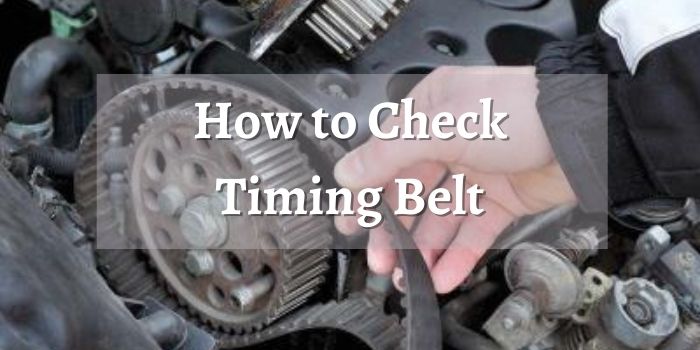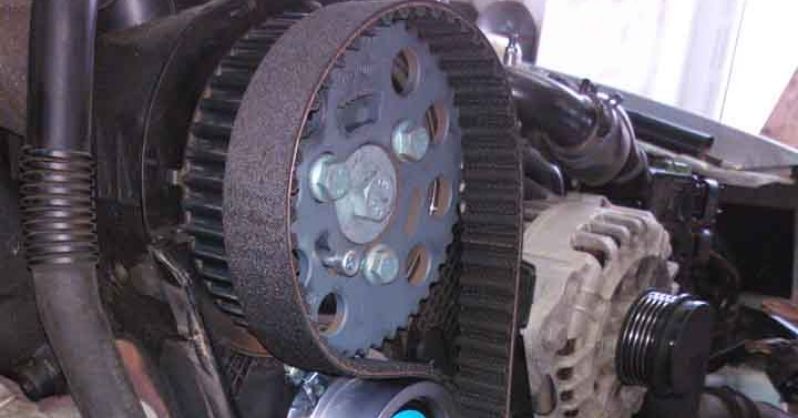The timing belt in your engine keeps everything in sync and is one of the most important components in the engine. As a result, you are bound to do proper maintenance of the timing belt. However, people often forget to check on this belt. This component needs to be replaced at certain intervals or based on its condition of it.
So that you know when you need to get your timing belt replaced, we will be guiding you through the process of how to check timing belt. Along with that, we’ll also be discussing the cost of the replacement and even the functions of it.

How To Know When To Replace Timing Belt
Since the timing belt is such a technical component, a lot of you may be wondering how you’d even know if it needed replacement. In this segment, we’ll be showing you how to check it and understand whether it needs to be changed or not. Additionally, we’ll be adding a list of the common signs that show your timing belt needs to be changed.
Open the Cover
If you don’t know how to take off the cover of the timing belt, read the manual that was given with your manual, and you’ll be able to do it in just a second. Once you have opened the cover, you will have to observe the belt. Frayed edges along with worn-out teeth on the interior of the timing belt are clear signs that it needs replacement.
You will notice some more damage as well as some cracks on the part if it’s getting old. Another common sign that your belt needs replacement is if you see that it starts to give off a shine or a marble effect in the light.
Do Some Testing With the Timing Belt
For this part, keep the cover off as well, and turn your engine on. Then, make some more observations of the belt that will help you determine if it needs replacement. If your belt is still in good condition, then you will see that it stays completely straight while the engine runs and also is tight.
On the other hand, if you observe that the belt is beginning to flex during this time, then you probably should get your timing belt replaced as soon as possible. Flexing of the belt is also a sign that it has a higher likelihood of jumping teeth.
Common Signs That Indicate Your Timing Belt Needs to be Replaced

The signs that we have listed below can also be indications of other issues, but they can be signs that your timing belt is on the verge of breaking.
- Oil begins to leak
- Car starts to jerk suddenly
- Lower engine power
- Rubbing and screeching sound coming from the timing belt.
- Difficulty in getting the ignition on
- Vehicle begins to overheat
Timing Belt Replacement Schedule
The time of your timing belt replacement will depend on how many miles you’ve driven with the vehicle and also on the model of the timing belt itself. Some timing belts will need to be replaced every 100,000 miles, while others might need to be changed even if you’ve driven less than 60,000 miles.
To get a clearer idea about when you should change the timing belt, you should read you’re the owner’s manual of your vehicle. The exact number of miles after which the replacement is needed should be written somewhere in there.
It is vital for you to get the timing belt replaced at the right time, or else you could be in for some serious damage. In some cases, when the belt breaks, you may have a complete engine failure, and the valves may get entirely broken or damaged. You could also very well be dealing with the cylinder wall, camshaft, and piston damage because of not replacing your worn-out belt. By doing it at the right time, you would be saving yourself from spending a ridiculous amount of money on repairs.
When the rubber timing belt becomes worn out and then completely breaks at a point, all the parts of the engine won’t be in sync anymore. This will result in the engine getting severely damaged as we have above.
The Cost to Replace Timing Belts
Getting a timing belt replaced isn’t quite cheap, but it’s still better than the thousands of dollars you’d have to spend on repairs otherwise. The timing belt is not necessarily an expensive part. If you go for a budget-friendly option, then it’ll cost you anywhere from $30 to $50. However, the labor cost is very high because the replacement can be a lengthy process.
So overall, you’ll have to spend a minimum of $500 on the replacement, but the bill could increase if the belt is very difficult to access. Furthermore, we would suggest you get the water pump replaced while you’re at it, which will increase the cost further. If you’re an experienced motorhead, then you might be able to do this yourself and save the labor cost.
How the Timing Belt Works
Because of the timing belt, all the components of the engine stay in sync, and the engine works alongside other parts like LQ4 with 317 heads cam. So, how does the timing belt work? It ensures the valve timing is correct by synchronizing the crankshaft and camshaft. The belt starts to move as the crankshafts begin turning. After that, the belt starts to turn the camshaft which controls the opening and closing of the valves. Also, this results in the up and down motion of the pistons.
In a 4-stroke engine, there are four phases, and the position of the intake and exhaust valves change with these phases. The timing belt is responsible for ensuring that the pistons and valves open and shut at the exact correct time during each of these phases. Otherwise, the whole engine could fail.
To avoid such a catastrophe, a good timing belt is essential as well because a bad one may not be as precise with the timing of the opening and shutting of the valves.
Conclusion
Although it might not seem to be that big of a deal, we cannot emphasize more how you need to replace your timing belt before it breaks and causes severe engine damage. Reading our guide on how to check timing belt will be of great help because it has all the necessary details included. If you still seem to be a bit confused, don’t hesitate to drop your questions in the comments below!